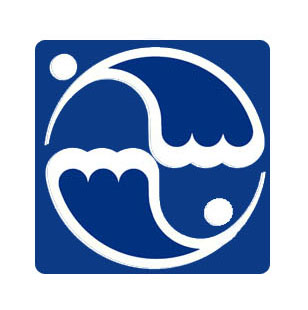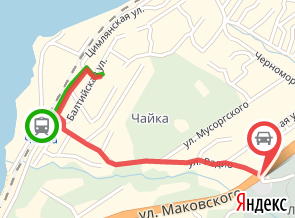|
Subdivision
Science degree
Dr.Sc.
|
Electrophysiological experiments have shown the high sensitivity of the skates' Lorenzini ampullae to magnetic field changes. The data obtained allows to conclude for the first time that the Earth's magnetic field can be perceived using these receptors. Based on behavioral, morphological and electrophysiological studies, it was shown that the abdominal sensory organ (ASO) of bivalves has a vibration detecting function in the aquatic environment and is similar to acoustic-lateral system of vertebrates.
The data obtained on the structure of the ASO sensory cells' hair apparatus, the mechanical properties of sensory cilia, the lipid and polypeptide composition of its membrane, the sensitivity regulation mechanisms allows us to formulate a hypothesis that the mechanism triggering the process of mechano-bioelectric transformation is based on the lateral interaction of sensory cilia. It was shown that the reproduction violation of bottom invertebrates mass species (sea urchins and bivalves) occurs under the influence of both anthropogenic pollution and climate variations. For sea urchins and bivalves that live in conditions of chronic pollution, poor quality of germ cells is the reason for the appearance of non-viable offspring.
Since the formation of germ cells is the most sensitive stage of the life cycle, it can be said that this stage mainly determines the level of reproduction in areas subject to anthropogenic impact. It was shown for the first time that under conditions of anthropogenic pollution, the timing of gonad maturation and, consequently, spawning in sea urchins is shifted from autumn to early summer. We observed the lack of spawning in sea urchins living in areas not subjected to anthropogenic pollution, when instead of spawning, mass resorption of mature gametes occurs. Thus, for the first time, it was shown for marine invertebrates that spawning does not occur automatically after maturation of gametes, but requires favorable environmental conditions.
For the first time, a set of methods was developed and applied, including analysis of the state of gonads, video recording of spawning behavior of sea urchins, and measurement of environmental parameters (temperature, salinity, oxygen and a-chlorophyll concentrations – an indicator of phytoplankton content, PAR, and tidal level) in the habitat.
The hierarchy of biotic and abiotic factors regulating spawning in natural settlements of S. intermedius was established: 1) the main factor is phytoplankton, in the absence of which spawning does not occur; 2) increasing the concentration of phytoplankton stimulates motor activity and spawning of males, whose sperm is necessary to stimulate the spawning of females; 3) the dark time of the day and the phases of the full and new moon are additional factors that increase the probability of spawning. It was presumed that phytoplankton may be the main factor regulating the reproductive cycle of sea urchins , and that the shift in the timing of their spawning in conditions of anthropogenic pollution is caused by eutrophication of the marine environment, which increases the probability of early spawning. The results are important for understanding how environmental changes, associated with interannual climate variability and anthropogenic pollution, affect the productivity of coastal ecosystems.
- Zhadan P.M., Vaschenko M.A., Ryazanov S.D. Assessing the effect of environmental factors on the spawning activity of the sea urchin Strongylocentrotus intermedius through video recording observations // Marine Ecology Progress Series. 2018. Vol. 588. P. 101–119.
- Zhadan P.M., Vaschenko M.A., Almyashova T.N. Effects of environmental factors on reproduction of the sea urchin Strongylocentrotus intermedius // Sea urchin – from environment to aquaculture and biomedicine / Ed. M. Agnello. – Rijeka: InTech, 2017. P. 35–69.
- Zhadan P.M., Vaschenko M.A., Ryazanov S.D. The role of circadian rhythm and environmental factors in the regulation of sea urchin spawning // Doklady Biological Sciences. 2017. Vol. 476, № 1. P. 191–195.
- Zhadan P.M., Vaschenko M.A., Lobanov V.B., Sergeev A.F., Kotova S.A. Fine-scale temporal study of the influence of hydrobiological conditions on the spawning of the sea urchin Strongylocentrotus intermedius // Marine Ecology Progress Series. 2016. Vol. 550. P. 147-161.
- Zhadan P.M., Vaschenko M.A., Almyashova T.N. Spawning failure in the sea urchin Strongylocentrotus intermedius in the northwestern Sea of Japan: Potential environmental causes // Journal of Experimental Marine Biology and Ecology. 2015. Vol. 465. P. 11–23.
- Заславская Н.И., Ващенко М.А., Жадан П.М. Генетическая структура поселений морского ежа Strongylocentrotus intermedius из северо-западной части Японского моря в связи со сдвигом сроков нереста // Биология моря. 2012. Т. 38, № 4. С. 305–317.
- Vaschenko M.A., Zhadan P.M.,Aminin D.L., Almyashova T.N. Lipofuscin-like pigment in the gonads of the sea urchin Strongylocentrotus intermedius as a potential biomarker of marine pollution: a field study // Archives of Environmental Contamination and Toxicology. 2012. Vol. 62, № 4. P. 599–613.
- Ващенко М.А., Жадан П.М., Альмяшова Т.Н., Ковалева А.Л., Слинько Е.Н. Оценка уровня загрязнения донных осадков Амурского залива (Японское море) и их потенциальной токсичности // Биология моря. 2010. Т. 36, № 5. С. 354–361.
- Ващенко М.А., Сясина И.Г., Жадан П.М. ДДТ и гексахлорциклогексан в донных осадках и печени камбалы Pleuronectes pinnifasciatus из Амурского залива (залив Петра Великого, Японское море) // Экология. 2005. Т. 36, № 1. С. 64–68.
- Ващенко М.А., Жадан П.М. Нарушение развития потомства морского ежа как показатель загрязнения среды // Экология. 2003. Т. 34, № 6. С. 459–465.
- Ващенко М.А., Жадан П.М., Латыпова Е.В. Многолетние изменения в состоянии гонад морского ежа Strongylocentrotus intermedius из Амурского залива Японского моря // Экология. 2001. Т. 32, № 5. С. 358–364.
- Vaschenko M.A., Syasina I.G., Zhadan P.M., Medvedeva L.A. Reproductive function state of the scallop Mizuhopecten yessoensis Jay from polluted areas of Peter the Great Bay, Sea of Japan // Hydrobiologia. 1997. Vol. 352. P. 231–240.
- Syasina I.G., Vaschenko M.A., Zhadan P.M. Morphological alterations in the digestive diverticula of Mizuhopecten yessoensis (Bivalvia: Pectinidae) from polluted areas of Peter the Great Bay, Sea of Japan // Marine Environmental Reserach. 1997. Vol. 44, № 1. P. 85–98.
- Сясина И.Г., Ващенко М.А., Жадан П.М., Карасева Е.М. Состояние гонад и развитие потомства гребешка Mizuhopecten yessoensis из загрязненных районов залива Петра Великого Японского моря // Биология моря. 1996. Т. 22, № 4. С. 255–262.
- Ващенко М.А., Жадан П.М., Медведева Л.А. Нарушение развития личинок морского ежа Strongylocentrotus intermedius из загрязненных районов залива Петра Великого Японского моря // Биология моря. 1994. Т. 20, № 2. С. 137–147.
- Zhadan P.M., Vaschenko M.A. Effect of diesel fuel hydrocarbons on embryogenesis and 45Ca2+ uptake by unfertilized eggs of sea urchin Strongylocentrotus intermedius // Comparative Biochemistry and Physiology. 1993. Vol. 105C, № 3. P. 543–548.
- Vaschenko M.A., Zhadan P.M. Ecological assessment of marine environment using two sea urchin tests: disturbance of reproduction and sediment embryotoxicity // Science of Total Environment. Suppl. 1993. Part 2. P. 1235–1245.
- Ващенко М.А., Жадан П.М., Ковалева Л.А., Чекмасова Н.М. Морфометрический и гистологический анализ половых желез морских ежей Strongylocentrotus intermedius, обитающих в условиях антропогенного загрязнения (зал. Петра Великого Японскогоморя) // Экология. 1992. № 1. С. 46–54.
- Zhadan P.M., Vaschenko M.A., Malakhov V.V., Medvedeva L.A., Gareeva R.V. The effect of environmental pollution, hydrocarbons and heavy metals on reproduction of sea urchins and bivalves // Oceanic and anthropogenic controls of life in the Pacific Ocean / Eds. V.I. Ilychev and V.V. Anikiev. – Netherlands: Springer, 1992. P. 267–286.
- Ващенко М.А., Жадан П.М., Евтушенко З.С. Изменение биосинтеза белка и активности ферментов в гонадах и потомстве морских ежей, содержащихся в среде с углеводородами // Биология моря. 1990. № 4. С. 40–44.
- Жадан П.М. Дирекционная чувствительность приморского гребешка Mizuhopecten yessoensis и гребешка Свифта Chlamys swifti к механическим колебаниям в водной среде // Биология моря. 2005. Т. 31, № 1. С. 37–44.
- Жадан П.М. Изменение расстояния между ресничками – новый механизм регуляции механочувствительности // Доклады Академии наук. 2005. Т. 403, № 4. С. 557–560.
- Жадан П.М. Изменение геометрии сенсорного эпителия и механочувствительности абдоминального сенсорного органа гребешка Mizuhopecten yessoensis // Сенсорные системы. 2005. Т. 19, № 3. С. 245–254.
- Жадан П.М. Абдоминальный сенсорный орган двустворчатых моллюсков: строение и функция // Сенсорные системы. 2005. Т. 19, № 4. С. 275–290.
- Zhadan P.M., Sizov A.V., Dautov S.S. Ultrastructure of the abdominal sense organ of the scallop Mizuhopecten yessoensis (Jay) // Cell and Tissue Research. 2004. Vol. 318, № 3. P. 617–629.
- Жадан П.М., Даутов С.Ш. Ультраструктура и механические свойства сенсорной реснички абдоминального сенсорного органа двустворчатого моллюска // Доклады Академии наук. 2003. Т. 390, № 2. С. 264–267.
- Жадан П.М., Даутов С.Ш. Уникальное строение и механические свойства сенсорной реснички абдоминального сенсорного органа приморского гребешка Mizuhopecten yessoensis (Jay) (Mollusca, Bivalvia) // Сенсорные системы. 2003. Т. 17, № 3. С. 231–240.
- Жадан П.М. О возможном участии лиганд-рецепторного механизма в функционировании механосенсорных реснитчатых клеток моллюсков // Доклады Академии наук. 2000. Т. 371, № 1. С. 125–128.
- Жадан П.М., Сизов А.В. Ультраструктура абдоминального сенсорного органа приморского гребешка Mizuhopecten yessoensis (Jay) // Сенсорные системы. 2000. Т. 14, № 2. С. 118–129.
- Жадан П.М., Сизов А.В. Действие антител против антигенов внешней поверхности ресничек на механочувствительность рецепторных волосковых клеток двустворчатого моллюска // Сенсорные системы. 1999. Т. 13, № 4. С. 301–308.
- Жадан П.М. Влияние конканавалина-а и его сукцинильного производного на чувствительность абдоминального сенсорного органа двустворчатого моллюска // Сенсорные системы. 1999. Т. 13, № 4. С. 309–316.
- Жадан П.М. Исследование роли циклических нуклеотидов в регуляции механочувствительности абдоминального сенсорного органа двустворчатого моллюска // Сенсорные системы. 1992. Т. 6, № 1. С. 21–28.
- Сизов А.В., Челомин В.П., Жадан П.М. Особенности липидных составов ресничек механочувствительных клеток и механорецепторного органа двустворчатых моллюсков // Биохимия. 1989. Т. 54, № 11. С. 1821–1829.
- Сизов А.В., Жадан П.М. Уникальный полипептидный состав мембран ресничек у волосковых клеток моллюска // Сенсорные системы. 1989. Т. 3, № 1. С. 101–104.
- Sizov A.V., Zhadan P.M. Protein differences in cilia of mechanoreceptor hair and gill cells of the scallop Mizuhopecten yessoensis // Comparative Biochemistry and Physiology. Part B: Biochemistry and Molecular Biology. 1989. Т. 94, № 2. P. 277–284.
- ЖаданП.М., ЧекмасоваН.М. Исследование функции реснички в механорецепторных клетках абдоминального сенсорного органа двустворчатого моллюска Glycemeris yessoensis // Доклады Академии наук СССР. 1986. Т. 286, № 4. С. 1016–1020.
- Жадан П.М., Дорошенко П.А. cАМР-зависимые процессы и механочувствительность абдоминального сенсорного органа гребешка Patinopecten yessoensis (Jay) // Биологические мембраны: Журнал мембранной и клеточной биологии. 1985. Т. 2, № 3. С. 285–291.
- Zhadan P.M., Semen'kov P.G. An electrophysiological study of the mechanoreceptory function of the abdominal sense organ of the scallop Patinopecten yessoensis (Jay) // Comparative Biochemistry and Physiology. Part A: Molecular and Integrative Physiology. 1984. Т. 78, № 4. С. 865–870.
- Дорошенко П.А., Жадан П.М. Роль ионов кальция в генерации ответа абдоминального сенсорного органа моллюска гребешка // Нейрофизиология. 1984. Т. 16, № 4. С. 475–480.
- Жадан П.М., Семеньков П.Г. Исследование функции абдоминального органа приморского гребешка Patinopecten yessoensis // Доклады Академии наук СССР. 1982. Т. 262, № 1. С. 248–251.
- Акоев Г.Н., Жадан П.М., Ильинский О.Б., Титков Е.С. Электрофизиологическое исследование свойств электрорецепторов (ампул Лоренцини) черноморских скатов // Нейрофизиология. 1974. Т. 6, № 4. С. 426–433.
- Akoev G.N., Ilynsky O.B., Zhadan P.M. Physiological properties of electroreceptors of marine skates // Comparative Biochemistry and Physiology. Part A: Molecular and Integrative Physiology. 1976. Vol. 53. P. 201–209.
- Akoev G.N.,Ilynsky O.B.,Zhadan P.M. Responses of electroreceptors (Ampulae of Lorenzini) of skates to electric and magnetic fields // Journal of Comparative Physiology A: Neuroethology, Sensory, Neural, and Behavioral Physiology.1976. Vol. 106. P. 127–136.
- Functioning mechanisms and role of sensory systems in marine animals ecology
- Influence of natural and anthropogenic environmental factors on behavior and reproduction of bottom invertebrates
- Donetsk National University (1970), biophysicist
- Ph.D. in biology (1976)
- Dr.Sc. in biology (2007)
The need for nutrition and predators avoidance and successful reproduction are considered the essential evolutionary selection factors of the animals' behavioral and morphological characteristics. The methodological approach developed, including the analysis of the gonads state, video recording of sea urchins' spawning behavior and environmental parameters measurement can be successfully used to study the mechanisms developing in the course of evolution that ensure the existence of aquatic organisms. It allows to achieve the same accuracy in field research that is typical for laboratory experiments, but it does not have any disadvantages connected with the difficulties of approximating the results of laboratory research to the actual living conditions of the research objects.
- РИНЦ Author ID: 79-669
- Scopus: 6603690762
- Research ID: A-9983-216






